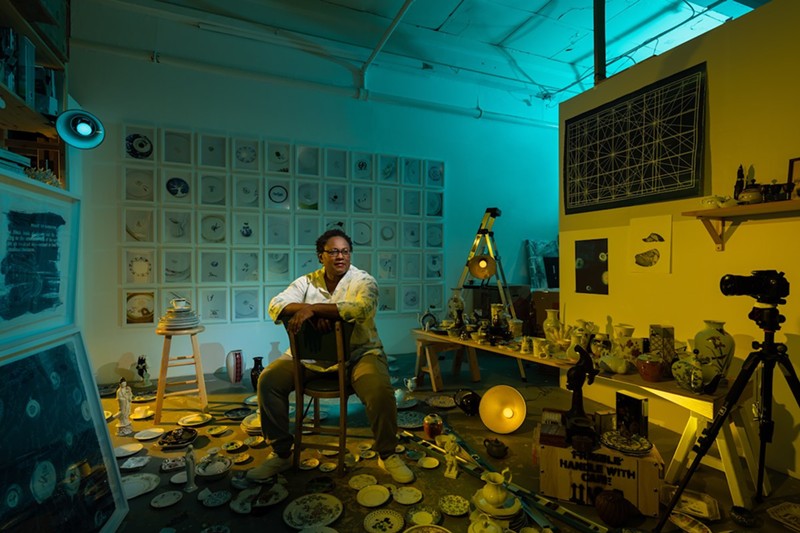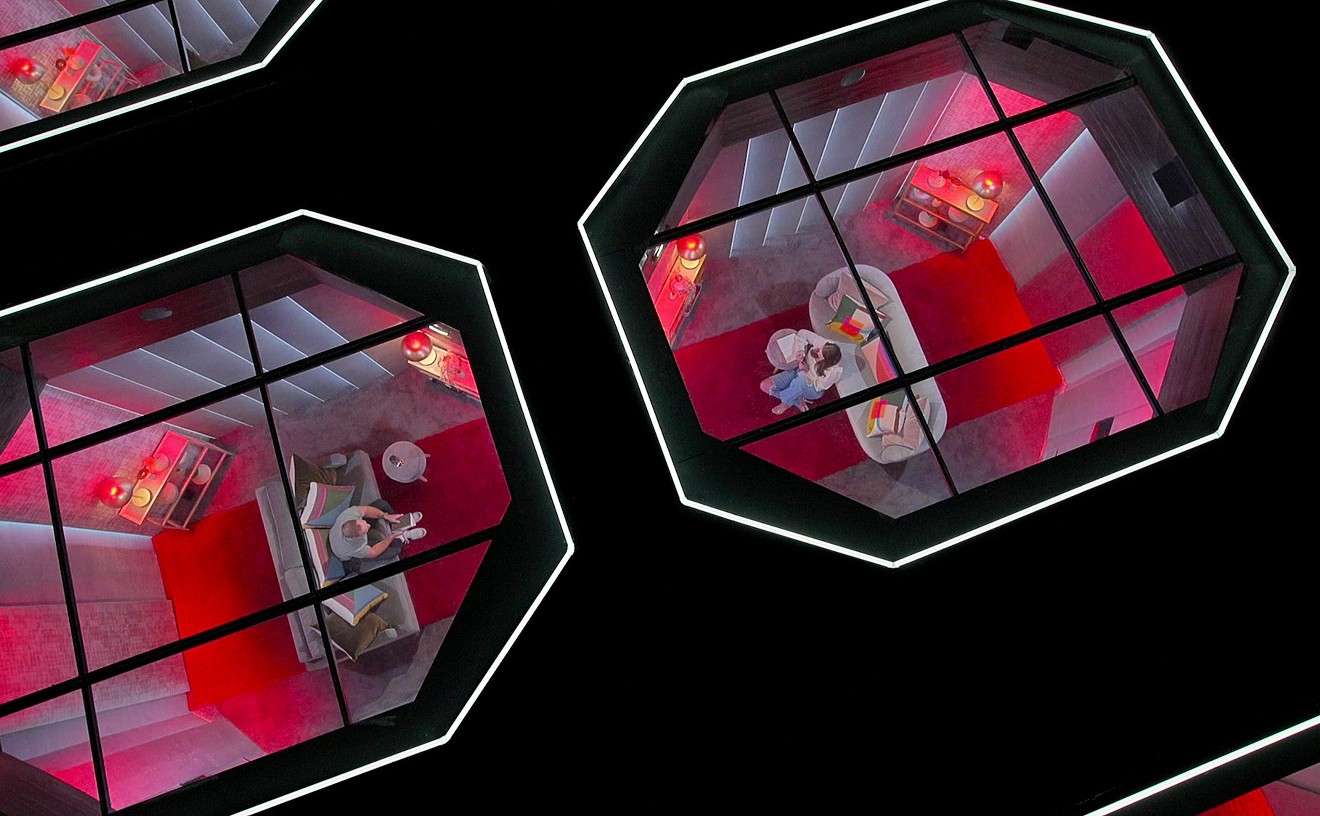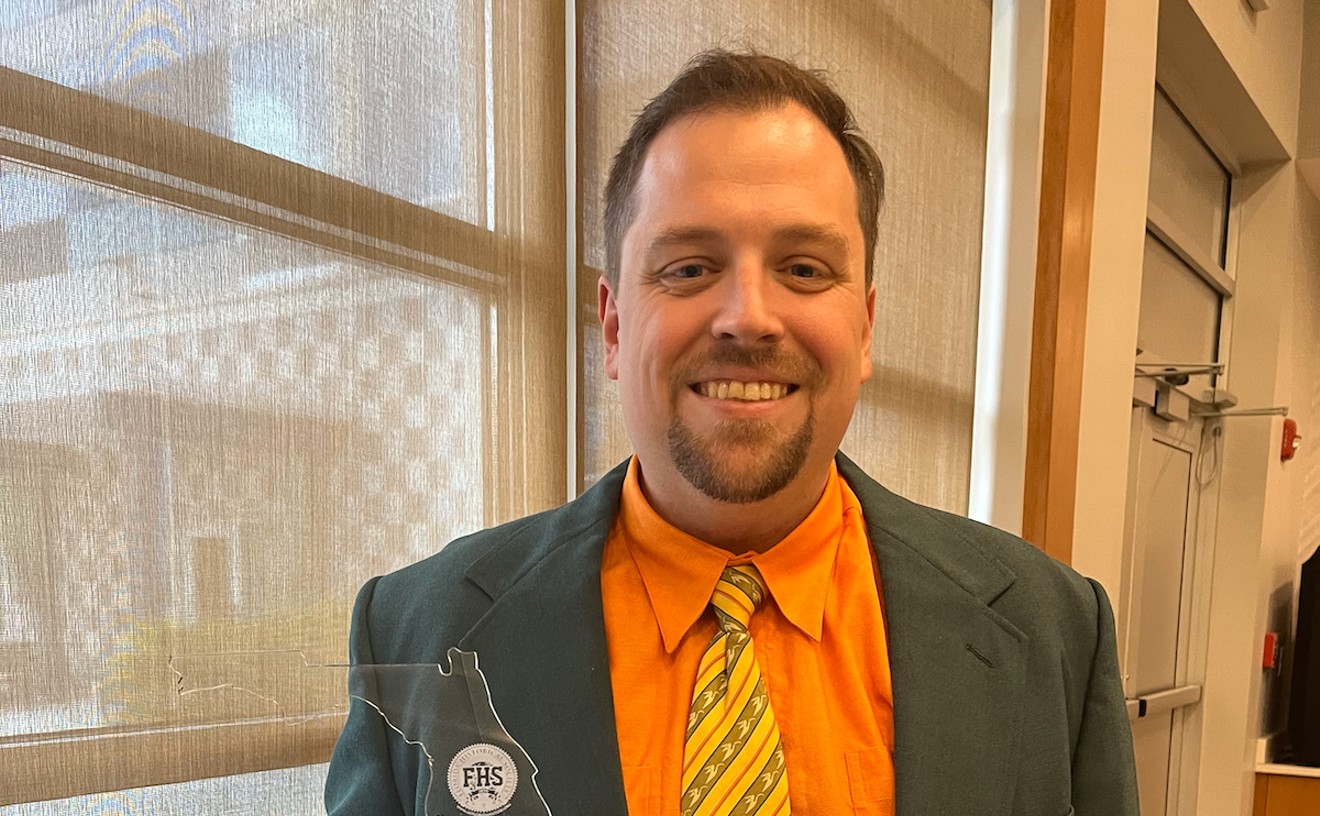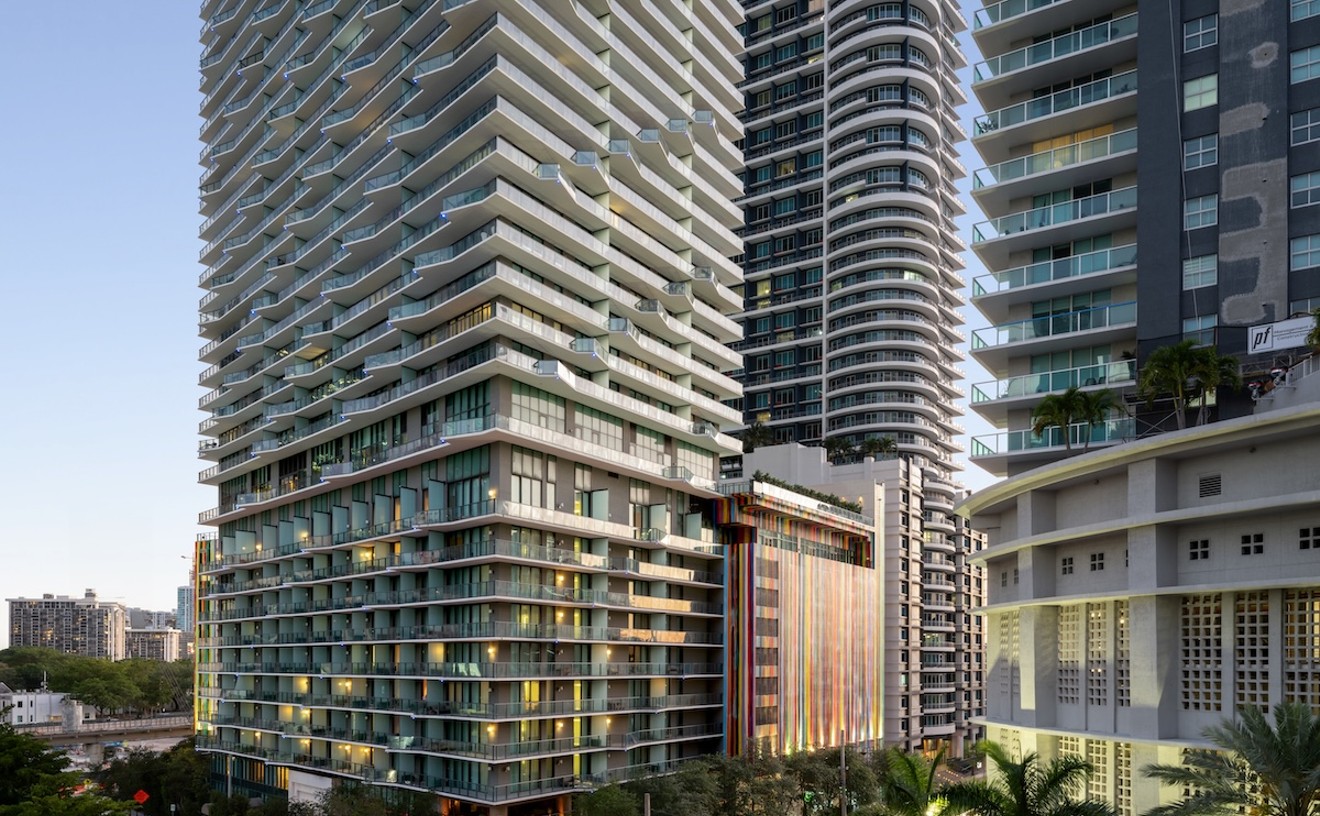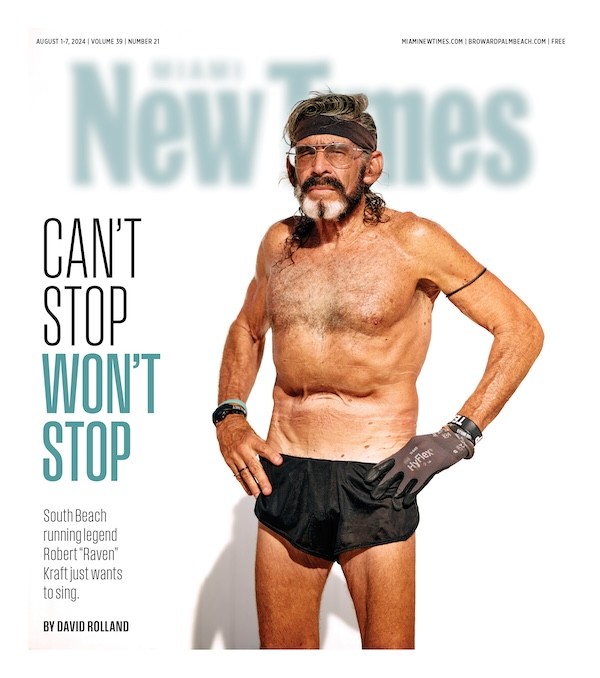A little girl's white, tulle dress undulating underwater. A foreign land brimming with growth and life. A beach shore strewn with the detritus of a human exodus.
These striking images form a video that is the highlight of Juana Valdes' new installation exploring the migration experience, Rest Ashore, at Locust Projects.
Valdes had the idea for the project after hearing the news and seeing images of immigrants from Africa, Syria, Pakistan, and elsewhere pouring into Europe, and Chinese artist Ai Weiwei's recreation of the photograph of a three-year-old Syrian boy drowned on Turkish shores. As a Cuban-American immigrant herself, it hit a trauma point.
"It made me think very much about the Cuban experience and how we can use that as a way to chart this other experience," Valdes says.
She wrote a proposal for her project, and it was funded by the 2018 Ellies Creator Award from Oolite Arts. She also received additional funding from Locust Projects through a grant by the Funding Arts Network and the gallery's annual exhibition support from Warhol Foundation, Knight Foundation, and Miami-Dade County.
The support gave her the freedom to investigate and develop an ambitious video using aerial, underwater, and above land shots. It was her first time working in this medium.
In creating the imagery, Valdes purposely did not include people because of how migrants are portrayed in media as "other," often an impoverished person of color.
"I wanted to create this visual language that could make it seem like anybody at any moment could be tossed into the experience," Valdes explains. "In the 20th century, due to climate change, due to unforeseen things, even like this pandemic, any particular group could be forced into this situation."
In the video, the objects floating in the ocean or scattered on the beach — clothes, soccer ball, teddy bear — could belong to anyone. The underwater shots looking toward the surface places the viewer in an ambiguous point of view — it could be the moment before sinking and expiring or before breaking the surface and surviving.
"The video is dedicated to those who don't make it, whose lives and voices are lost at sea. It could be any of us at any particular point in time," Valdes says.
Rest Ashore also looks at the history of Cuban migration and shows the link between U.S. policies toward Cuban immigrants. Cubans throughout the decades were allowed to come here, build a life for themselves, and contribute to America, which, Valdes notes, is the story of every immigrant group who has come to this country.
Historical photographs of Cuban immigrants are displayed on old, stacked televisions from the '60s when the wealthy, elite class started leaving the island, the freedom flights of the '70s (when Valdes and her family came to Miami), the Mariel boatlift in the '80s, and, finally, the balseros from the '90s.
"It made me very aware of the social classes that exist," Valdes admits. "You can see how each decade it shifts socially who is able to come and the dynamics, which is about accessibility and privilege and how that is always tied to race and economics."
In each of these decades, there are parallels to the modern-day global refugee crisis. Valdes hopes the show makes comparisons in subtle ways that will resonate with viewers.
Sails, standing in for projection screens, and shipping palettes create a space feels like being on a boat or coming into a shipyard. The effect is immersion in the narrative. The video begins in the morning and ends at night, and the viewer is the person making that journey. The trip is a day in which your life could end or be wholly transformed.
"You have to imagine — and I hope that's what the video does — what would it be like for you to be at sea," Valdes says. "How fragile and vulnerable and scared must you be. And how desperate at the same time to take that kind of journey."
During her research, Valdes found a statistic from the UN Refugee Agency that said there were 79.5 million forcibly displaced people worldwide at the end of 2019 — or one percent of the Earth's population.
"That has to make us question what are we going to do, what are we doing, and how are we going to deal with this need of people to find better places to live and actually have a humane life and to live with some sort of dignity," she says. "Because that's what everybody is looking for."
Rest Ashore. Through October 24, at Locust Projects, 3852 N. Miami Ave., Miami; 305-576-8570; locustprojects.org. Wednesday through Saturday 11 a.m. to 5 p.m. by appointment only.

Audio By Carbonatix
[
{
"name": "Air - MediumRectangle - Inline Content - Mobile Display Size",
"component": "19274298",
"insertPoint": "2",
"requiredCountToDisplay": "2",
"watchElement": ".fdn-content-body",
"astAdList": [
{
"adType": "rectangle",
"displayTargets": "mobile"
}
]
},{
"name": "Editor Picks",
"component": "17482312",
"insertPoint": "4",
"requiredCountToDisplay": "1",
"watchElement": ".fdn-content-body",
"astAdList": [
{
"adType": "rectangle",
"displayTargets": "desktop|tablet"
},{
"adType": "rectangle",
"displayTargets": "desktop|tablet|mobile"
}
]
},{
"name": "Inline Links",
"component": "18711090",
"insertPoint": "8th",
"startingPoint": 8,
"requiredCountToDisplay": "7",
"maxInsertions": 25
},{
"name": "Air - MediumRectangle - Combo - Inline Content",
"component": "17482310",
"insertPoint": "8th",
"startingPoint": 8,
"requiredCountToDisplay": "7",
"maxInsertions": 25,
"watchElement": ".fdn-content-body",
"astAdList": [
{
"adType": "rectangle",
"displayTargets": "desktop|tablet"
},{
"adType": "rectangle",
"displayTargets": "desktop|tablet|mobile"
}
]
},{
"name": "Inline Links",
"component": "18711090",
"insertPoint": "8th",
"startingPoint": 12,
"requiredCountToDisplay": "11",
"maxInsertions": 25
},{
"name": "Air - Leaderboard Tower - Combo - Inline Content",
"component": "17482313",
"insertPoint": "8th",
"startingPoint": 12,
"requiredCountToDisplay": "12",
"maxInsertions": 25,
"watchElement": ".fdn-content-body",
"astAdList": [
{
"adType": "leaderboardInlineContent",
"displayTargets": "desktop|tablet"
},{
"adType": "tower",
"displayTargets": "mobile"
}
]
}
]

